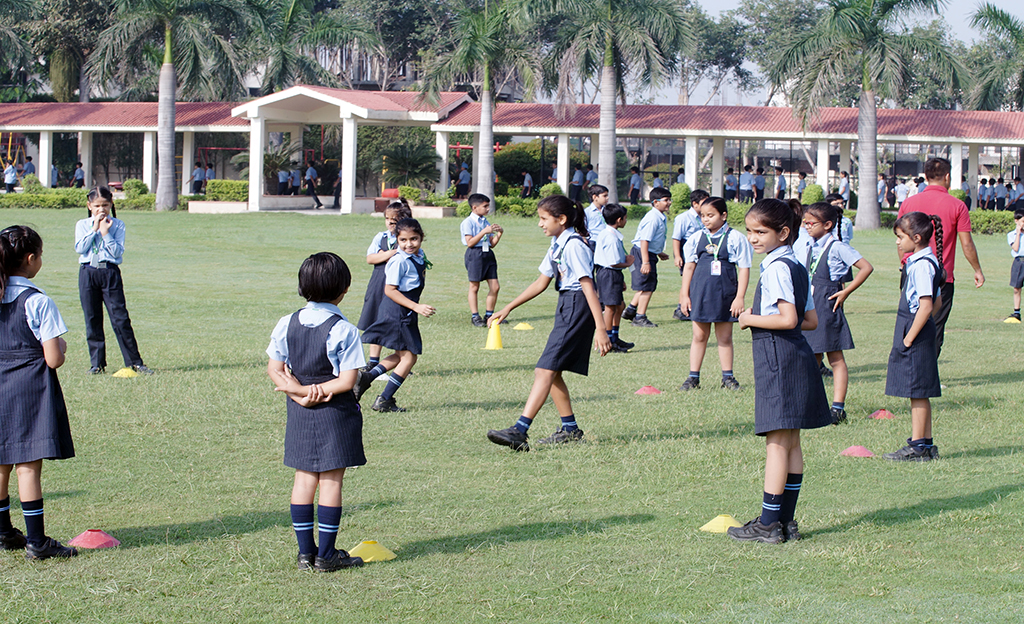Too much of anything is not good. This simple statement is true for all scenarios no matter how demanding its surrounding parameters are. The current century has indeed become more academically challenging where mediocre test scores are outright unacceptable and students are inherently expected to put in more hours in their study time. This trend naturally eats up their leisure time which could either be used for physical activity or exploring creativity and we all seem to be at peace with it citing the necessity to get a quality education.
But more time spent studying does not necessarily transform into better academic performance. In fact, various researches have time and again shown that physical inactivity directly affects a student’s education capabilities. For this simple reason, you will always find that the top 5 school in Sonepat strives to maintain that ultimate balance, to include at least an hour of physical training without compromising on academic excellence.
The scientific side of this argument
A Columbia University researcher Charles Basch came up with scientific facts to support the point of how physical activity actually compliments educational performance. He summarised his findings as:
- A session of activity increases the number of neurotransmitters in the brain. This helps the students with their concentration, ability to focus and remember better.
- Rigorous movements increase the blood flow in the entire body and send more oxygen to the brain. This helps in neuron development.
- Lastly, neurotrophins production also sees a boost that ensures better survival of brain neurons. This leads to enhanced memory, increased learning capacity, and so on.
The combined happenings of the above three will naturally be inferior in an inactive child whose whole concentration is focused on improving marks. This student will have to work harder, will be prone to developing stress, and may suffer from lower self-esteem.
The best school in Sonepat identifies this and makes physical activity a necessary part of their curriculum. Educational institutes are responsible for the overall development of the students and this cannot happen with misdirected attention on academic performance. There must be facilities for sports, both outdoor and indoor, combined with effective sessions for yoga and meditations.
However, academics cannot take a backseat
While it may seem that the argument on physical activity’s side is heavily backed by scientific facts, academic achievement cannot take a backseat in any form. The demands outside the school boundaries are more competitive than it ever was and at the end of the day, high grades do matter. Students cannot afford to give up a maximum of their time behind other commitments and solid study hours should remain a priority. Exams, assignments, and projects, all should find a place in their daily schedule and the pressure must be distributed accordingly.
Schools play a very important role here. By improving their classroom quality and indulging in healthy teaching practices, institutes can increase the amount of knowledge consumption within their operating hours. Additionally, by providing facilities like reading rooms and a rich library, schools can help students to complete their academic work within the premises and free up time at home. Here again, if sports come as part of the daily curriculum, there does not have to be any sacrifice in either world.
The perfect balance – answer to all debates
In reality, no single side can win over the other. Physical activity, though not visible, increases brain activity in children and makes them more responsive towards their environment. An electroencephalogram (EEG) test on a group of students showed that physically fit children showed faster signals in their brains when some external condition was changed. This group also showed superior reading skills, was better at detecting grammatical errors and their language skills were far more developed than the inactive group. Even complex tasks were better performed by the former group of students have they had enhanced cognitive growth.
When balanced with education, physical activity actually boosts academic performance. Setting aside a specific time to actively indulge in sports and other exercises will make the children more attentive during their academic sessions. The brain rests, the body works and every muscle is flexed in the right way. Children stay healthy, there’s a lesser chance of falling sick and even the psychological benefits are undeniable.
The curriculum of schools like Swarnprastha is ideal. One of the best CBSE schools in Sonepat, the institute gives equal priority to both physical activity and academic achievement. The ambiance is stress-free for students to thrive in both education and health and their performance is proof of the school’s success. So, let your child be a part of such curriculums. A win-win situation is what’s necessary.








